Choose the Best Mowing Height
Tall grass soon becomes weak grass. I’ve been saying that for most of my career.

This is the season to determine and utilize optimal mowing height for your turfgrass.
Our southern lawngrasses are basically runner-producing types of turf. When we let them grow taller than the recommended mowing heights they “reach for the sunlight” and begin to thin out. That’s when weeds get a start and when the lawn starts to go downhill.
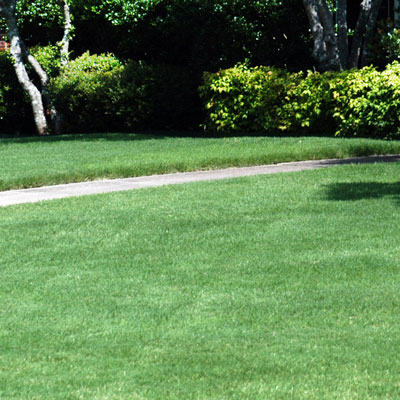
By mowing at recommended height and varying mowing patterns you can keep lawn looking really sharp all the time.
There are those who will tell you that keeping the grass on the tall side improves its summer heat tolerance or winter hardiness, but neither of those is correct. Nor will it improve its ability to survive in periods of drought. Pure and simple, when you keep your lawn low and dense, it’s going to be thickest and best.
The example I’ve always given is when you find a tuft of bermudagrass growing in the crack of an alley or street, watch it for a while. It gets run over repeatedly, beaten down by tire after tire. It may only be a quarter-inch tall, but it’s as dense as a pincushion. So, with that in mind, I offer these suggestions:
Optimal mowing heights…
Here are the best heights to give the grass enough blade area to manufacture food and grow vigorously, but not grow so tall that it would become spindly.
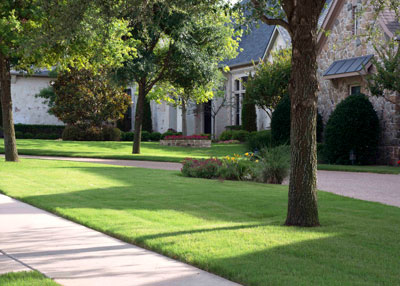
Common bermudagrass: 1-1/4 to 1-1/2 inch. If you find that your lawn is browning after you mow and not greening up for several days, you can try raising the mower one notch in June so you’ll leave more blade surface when you mow. However, be sure to drop the blade back down the following February to start the process over.
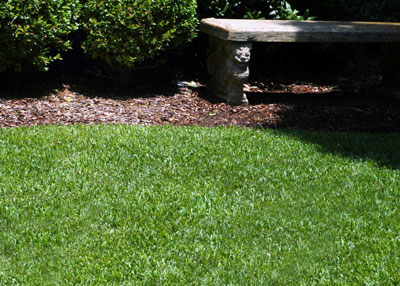
St. Augustine: 2 to 2-1/2 inches. In more heavily shaded lawns 2-1/2 to 3 inches.
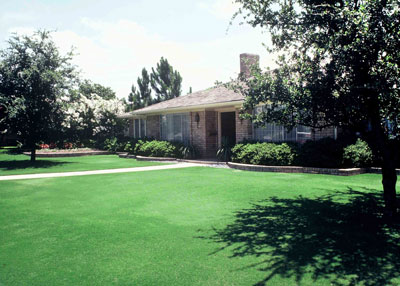
Dwarf hybrid bermudas: 1/4- to 3/4-inch, depending on the variety. You’ll need a reel mower, and you’ll need to mow several times per week to maintain best vigor.
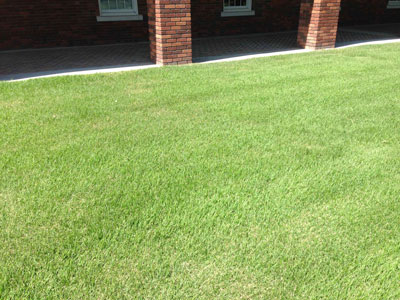
Zoysias: 2 to 3 inches, depending on variety and width of blade/texture of the grass.
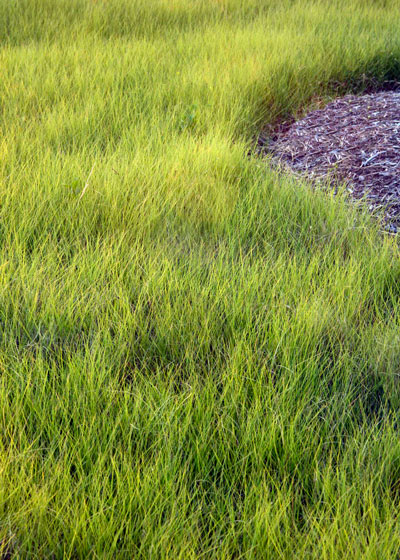
Buffalograss: 3 to 4 inches. Not only will the buffalograss do better at that height, but that tall height will also discourage growth of bermuda, its most serious invader.

Fescue: 3 to 4 inches. This is a clumping cool-season grass that needs the extra blade area to hold its own against shade and summer temperatures.
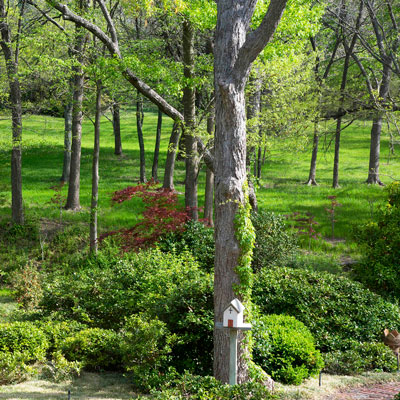
Ryegrass in the Sperry landscape in winter. Note to cities who feel that planting ryegrass results in extra consumption of water in winter – I have overseeded this hillside each fall for the past many years. I water it one or two times the week that I seed it in October, and then it gets no more irrigation at all. Those rules make inaccurate assumptions!
Ryegrass in winter: Used as temporary turf in new lawns or to overseed existing turf, it can be mowed at almost any height between 1/2- and 2 inches. “Perennial” rye is a much better choice for use in overseeding. (For those who think that overseeding wastes water, please see my story in prior e-gardens.)
Note: If you want to get your lawn off to a great start, and if you’ve been mowing it too high in the past, this is the time of year to drop the mower down and get a fresh start. Bag the clippings and use them in the compost or as a mulch around shrubs. Do not send them to the landfill.
